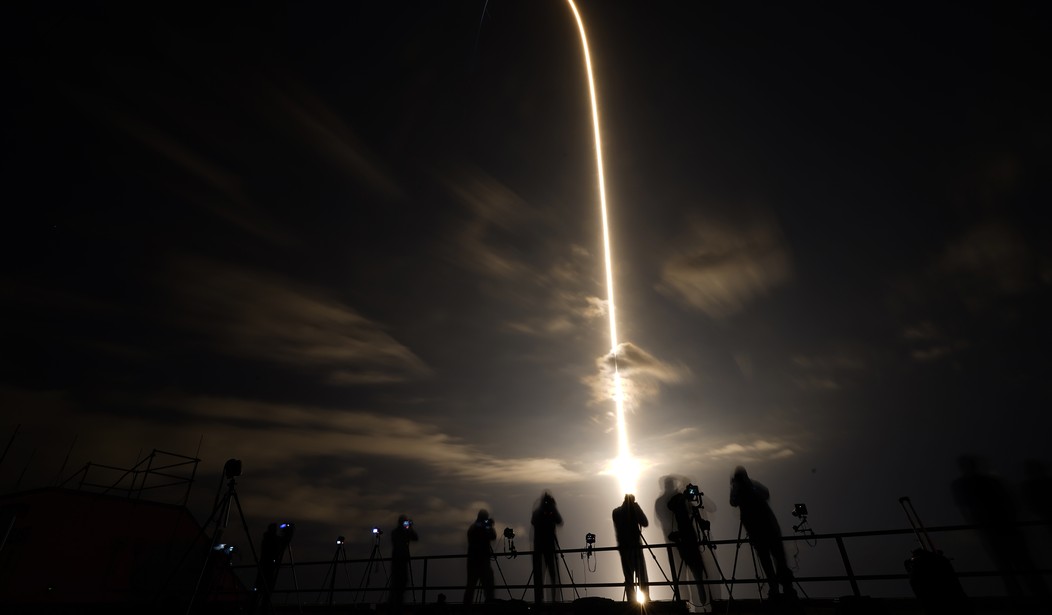The privately funded Polaris Dawn human space mission just kind of casually reached the highest orbit in more than 50 years on Wednesday and on Thursday conducted the first civilian spacewalks to just as little fanfare.
I'd like to correct that.
Hours after Wednesday's zero-dark-thirty launch from the Kennedy Space Center in Florida, commander/billionaire Jared Isaacman, SpaceX engineer/newly-minted astronaut Sarah Gillis, pilot Scott Poteet (U.S. Air Force, ret.), and medical officer/SpaceX engineer Anna Menon reached a higher orbit than any human since Pete Conrad and Dick Gordon on Gemini 11 in 1966.
The Apollo 17 astronauts were the last humans to fly farther from Earth than Polaris Dawn — in 1972.
A civilian had never gone on a spacewalk before Thursday. Here's Isaacman doing just that.
Gillis also spacewalked, but I haven't found video of her EVA.
The spacewalks aren't just for show.
"It'll look like we're doing a little bit of a dance. And what that is is, we're going through a series of test matrix on the suit," Isaacman explained. "The idea is to learn as much as we possibly can about the suit and get it back to the engineers to inform future suit design evolutions."
Polaris Dawn's crew also helped set another record. When they reached orbit on Wednesday, 19 human beings were living and breathing above the Earth at the same time.
What Polaris Dawn and other SpaceX missions remind me of is NASA's Mercury and Gemini missions of the 1960s. There were numerous technological to be overcome and skills to be learned before the Apollo program could take its final shape and send men to the moon.
- Can we get a man into space? (Mercury-Redstone 3 aka Freedom 7)
- Can we get a man into orbit? (Mercury-Atlas 6 aka Friendship 7)
- Can we make flight adjustments in orbit? (Gemini 3)
- Can we spacewalk? (Gemini 4)
- Can humans function in space long enough to make it safely to the moon and back? (Gemini 5)
And so on.
NASA also had to learn about known unknowns, like whether radiation in space would sicken or kill our astronauts in higher orbits. The men who performed those Mercury and Gemini missions, from Alan Shepard on Freedom 7 to Jim Lovell and Buzz Aldrin on Gemini 12, were pioneers in every sense of the word. What they accomplished made Apollo possible. Without them, JFK's challenge to land a man on the moon before 1970 would have been a largely forgotten speech by a dead president.
Elon Musk wants to send humans to Mars (eventually including himself), preferably beginning in 2028. SpaceX, like NASA in the '60s, has to learn many lessons before that becomes possible.
SpaceX's genius play is that Musk has figured out how to get other people to help pay for his R&D — and I don't mean your tax dollars. Polaris Dawn was funded by Isaacman. While the billionaire refuses to say how much he paid, I'd be shocked if it was anything less than $200 million, and I wouldn't be too surprised if it turned out to be double that.
Previously, Isaacman funded and commanded 2021's Inspiration 4 mission. Also flown by SpaceX, I4 was the first all-civilian, privately funded space mission. Getting that done without NASA was the first step in opening up human space exploration to the private sector.
Isaacman is getting what he wants, and SpaceX is getting the data and experience it needs to keep pushing the boundaries of human space travel.
So if anyone tells you that Polaris Dawn is just some rich man's stunt, you can tell them the truth. It was one small walk for a man and woman, and one giant leap for mankind.
Recommended: Kiss Your Giant Rate Cut Goodbye
P.S. If you aren't already a VIP supporter, please consider doing your bit to keep alternative conservative media alive by joining up during our our 50% off SAVEAMERICA promotion.










Join the conversation as a VIP Member